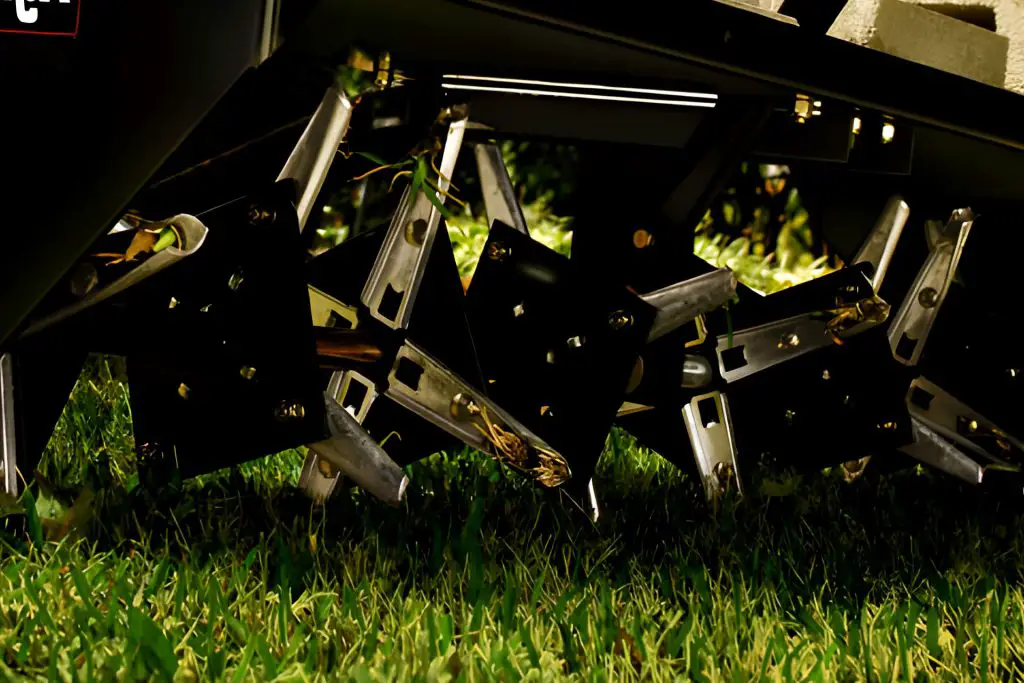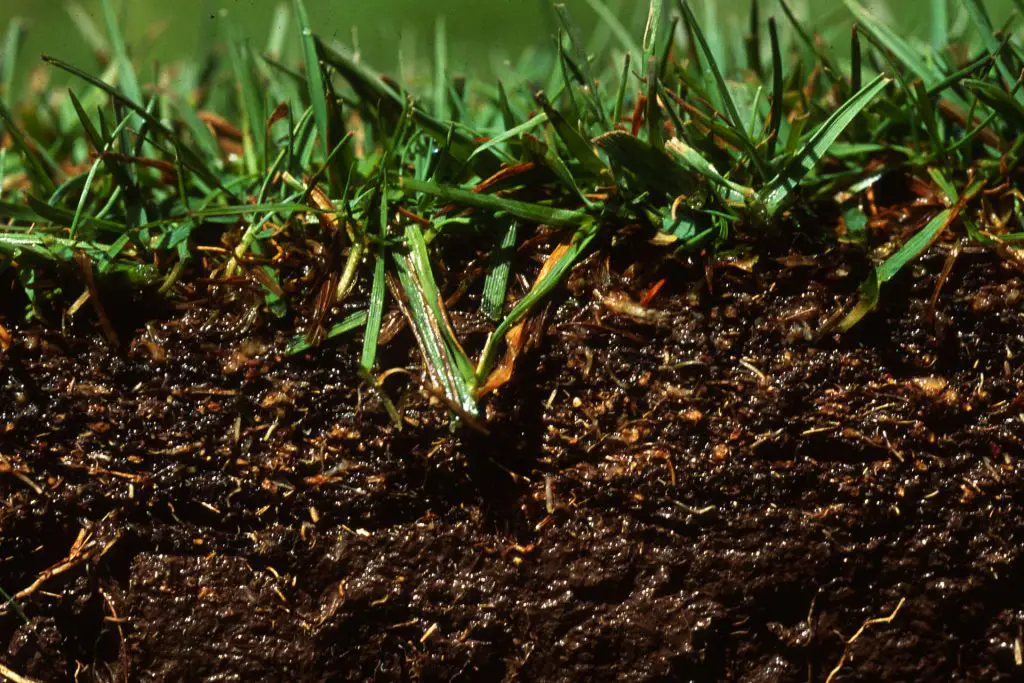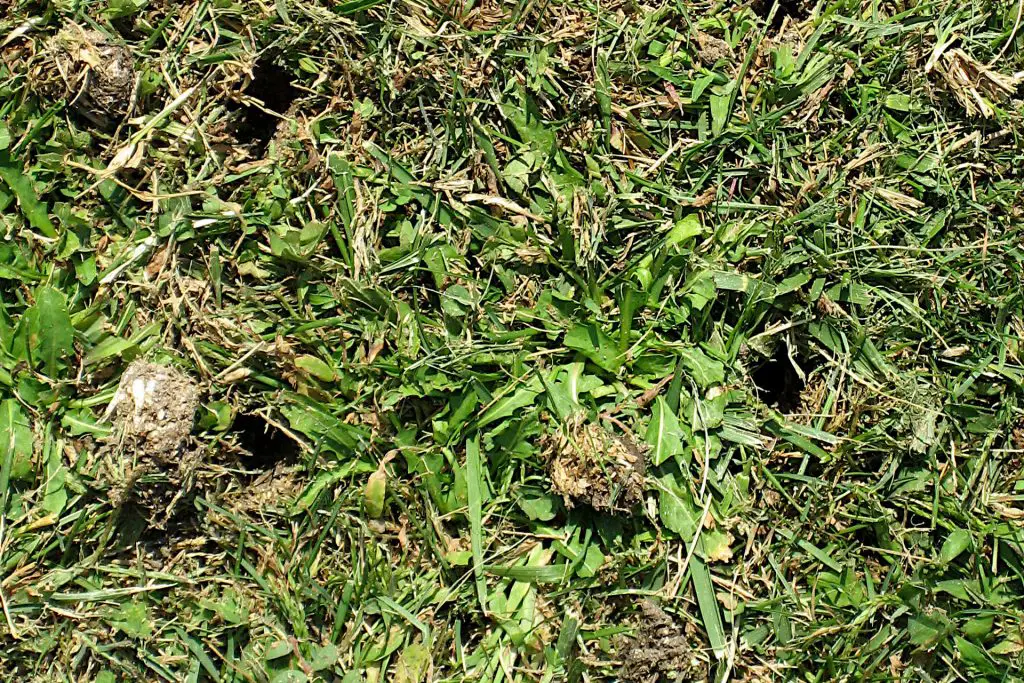Is Aerating Your Lawn in Fall Really the Best Time?
- Aeration is crucial for maintaining a healthy lawn.
- The best time to aerate your lawn is determined by the grass type and its peak growing cycle.
- Warm-season and cool-season grasses have different growth cycles, influencing aeration timing.
- Lawn aeration helps relieve soil compaction, improving drainage, and promoting healthy grass growth.
As any lawn care professional will tell you, aeration is key to maintaining healthy grass. But when is the best time to aerate your lawn? Fall has long been considered the best time to aerate, but is that really true? And does the type of grass you have or the extent of the problem make a difference?
If your lawn starts to pool water, looks brownish in color, develops a thick thatch, or shows signs of thinning or bare patches, these are all signs that your lawn is not getting enough water, air, or nutrients.
There could be a number of reasons but one of the most common is compacted soil and a lawn in need of aeration. But do you wait until fall or act sooner? Let’s take a closer look at these important questions.
What is lawn aeration and why is it important?

Lawn aeration is the process of making small holes in your lawn so air, water, and nutrients can penetrate the soil more easily.
You can aerate a lawn using a garden fork, a spike aerator, or a small plug aerator. If though, you have a large lawn, then it is much easier to use a larger dedicated tool such as a machine-driven core aerator.
Core and plug aerators remove plugs of soil from the ground, making larger and deeper holes than a garden fork. The depth of the holes made by a core aerator will depend on the model, but they are typically 3-4 inches deep, and the soil plugs removed can be left to break down back into the top of the soil.
Why Is Soil Aeration Important?
Soil aeration is important because it can relieve soil compaction. Soil compaction prevents or hinders oxygen circulation and moisture levels in the soil and stops nutrients from being delivered to plant roots.
The result is that the grass roots find it difficult to penetrate the compacted soil, instead forming a shallow root structure on the surface of the soil substrate which struggles to find enough nutrients to properly thrive.
Core aeration allows you to deal with excessive thatch, improve drainage and microbial activity, and help nutrients travel deeper into the substrate. All of which are important for keeping your lawn healthy and thriving.
Soil Compaction

Soil compaction is a major problem for many lawns. It happens when the soil is packed down too tightly, preventing air, water, and nutrients from getting to the roots of your grass. This can lead to unhealthy grass and even bare patches. Lawn aeration can help relieve this compaction and improve drainage.
Improved Drainage
Lawn aeration is also important for improving drainage. Poor drainage is a common problem in lawns, especially if the soil is compacted. Aerating your lawn can help to improve drainage by allowing water to seep down through the holes into the subsoil below. This can help to reduce puddling and prevent waterlogging.
Thinning Out and Bare Patches
Even though your grass may appear to be in good shape right now, when the weather gets warmer it could start to turn into a patchwork pattern as bare and thinning areas appear. This is especially the case if you are prone to cold freezing winters with snow lying on the grass for extended periods.
A patchy lawn can be remedied by aerating, seeding, and fertilizing. These measures will help ensure that bare areas are revived as new grass will grow to fill the gaps.
Invasive Weeds
A patchy lawn will inevitably allow weeds and crabgrass to take advantage of stressed or overworked lawns to spread throughout your garden and spread further. Your grass plants will have to compete with weeds water and oxygen in the soil, and if there are insufficient nutrients present, the weeds will dominate and have a greater chance of thriving.
Signs Your Lawn Urgently Needs Aeration
Having discussed the reasons why aeration is crucial to a healthy law we need to decide if your lawn really needs aeration?” Below are a few of the telltale signs that your lawn is practically screaming for some breathing room.
- Dry and Hard Soil: If you step on your lawn and it feels more like a brick pathway than a soft meadow, it’s a clear sign. Compacted soil becomes hard, making it difficult for roots to penetrate and access essential nutrients.
- Pooling Water: After a rain shower, do you notice puddles forming on your lawn? This isn’t a new water feature; it’s an indication that your soil isn’t draining effectively due to compaction.
- Thin or Bare Patches: Sparse patches or areas where grass refuses to grow can be a result of compacted soil. Grass roots struggle to expand and access nutrients, leading to these unsightly patches.
- Excessive Thatch: Feel a spongy layer when you walk on the grass? That’s thatch—a mix of dead grass, roots, and debris. A thick layer of thatch can block water, air, and nutrients from reaching the soil.
- Stunted Grass Growth: If your grass seems to have hit a growth plateau despite regular watering and fertilizing, compacted soil might be the culprit. Aeration can give your grass the boost it needs.
- Water Runoff: Instead of seeping into the soil, does water seem to run off to the sidewalks or streets? This isn’t just wasteful; it’s a sign that your lawn needs aeration to improve absorption.
Remember, aeration is more than just a lawn care task—it’s a revitalizing treatment that your lawn craves. The next question is when is the best time to aerate your lawn?
Why is Fall the Common Time to Aerate
There are a number of reasons why fall is the most common time to aerate most notably it is at the end of the summer season when your lawn is likely to be most in use.
Firstly, the cooler fall temperatures provide ideal conditions to allow the grass to recover more quickly from the aeration process.
Secondly, the hard summer months can take a toll on your lawn, and aerating can help it recover from all the foot traffic as it is often during this period compaction occurs.
Finally, cool-season grasses have two peak growing seasons in early spring and in fall, while during the hotter summer months, their growth rate is much reduced. Therefore, fall is often used because it allows both recovery from summer traffic and the grass roots, which are still growing, to extend down in the opened cores promoting deeper roots and new and stronger growth.
However, warm-season grasses work to a different growing cycle than that of cool-season grasses, and as a result, fall isn’t necessarily the best time to aerate a warm-season grass lawn
How Warm-Season and Cool-Season Grass Impact the Timing of Aeration

Warm and cool-season grasses grow and go dormant at different times based on soil temperature. Warm-season grass goes dormant at 65°F while cool-season grass goes dormant when the temperature drops below 45°F, some twenty degrees lower. In addition, the growing cycle for cool-season grass slows right down when temperatures reach 75°F
This difference in timing of peak growth and dormancy between warm-season and cool-season grass, and whether you are planning to overseed the lawn after aerating, should have considerable influence on the timing of aeration.
As we have discussed one of the key reasons to aerate is to allow the root growth to penetrate deeper into the substrate. For this to happen you should be looking to aerate just before the peak growing season for your types of grass.
Aeration Considerations for Warm-Season Grasses
In terms of warm-season grass, if you allow the temperature to drop below 65°F then the grass won’t grow down into the newly created cores.
Obviously, local climatic conditions play a huge role in the timing but if you live in a traditional zone and have warm-season grass then, if you leave it too late into the fall, aeration won’t be as effective.
As summer is the peak growing season for warm-season grasses, such as Zoysia or Bermuda, the best time to aerate and overseed will be in the spring and summer as the grass reaches its peaking growing season.
Best Timing for Aerating Specific Warm-Season Grass Types
Bermudagrass: Known for its fine texture and aggressive growth, Bermudagrass thrives in sunny areas. It’s resilient and can withstand heavy foot traffic, making it a popular choice for many homeowners.
Buffalograss: A true prairie grass, Buffalograss boasts a soft blue-green hue. It’s drought-tolerant and requires minimal maintenance, making it a favorite for those seeking a low-effort lawn.
St. Augustine: With its broad, flat blades, St. Augustine grass creates a thick, carpet-like lawn. It’s particularly well-suited for coastal areas due to its salt tolerance.
Zoysiagrass: Offering a dense and lush green cover, Zoysiagrass is known for its ability to resist pests and diseases. Its fine to medium texture gives lawns a smooth, velvety appearance.
Ideal Aeration Times
Bermudagrass: Best aerated during late spring to early summer, when it’s actively growing and can recover quickly.
Buffalograss: Optimal aeration times are in late spring, just as the grass begins its growth spurt.
St. Augustine: Aerate in late spring to early summer, ensuring the grass is in its peak growth phase for rapid recovery.
Zoysiagrass: The ideal window for aeration is during late spring, capitalizing on its active growth period.
Factors Affecting Aeration Timing for Warm-Season Grasses
- Soil Moisture: Warm-season grasses prefer well-drained soil. Aerate when the soil is damp, not soaking wet, to ensure effective penetration.
- Foot Traffic: Areas with high foot traffic compact faster. If your lawn is a popular gathering spot, consider aerating more frequently.
- Weather Patterns: Unexpected cold snaps or heat waves can stress grass. Monitor the forecast and aerate during stable, mild weather.
- Previous Lawn Treatments: If you’ve recently applied herbicides or other treatments, wait a few weeks before aerating to avoid disrupting the lawn’s recovery.
Understanding the specific needs of your warm-season grass type is crucial. By aerating at the right time and considering various factors, you’ll set the stage for a vibrant, healthy lawn all season long
| Grass Type | Ideal Aeration Time |
|---|---|
| Bermudagrass | Late spring to early summer |
| Buffalograss | Late spring |
| St. Augustine | Late spring to early summer |
| Zoysiagrass | Late spring |
The above table lays out a simple overview of when each warm-season grass type should ideally be aerated. and should help you make informed decisions about the best time to aerate your lawns based on the specific grass type they have.
Aeration Considerations for Cool-Season Grasses
For cool-season grasses, early spring or fall are both good times to aerate when the temperature is between 45°F and 75°F. This gives you a lot more flexibility than with warm-season grass and fall may well be the perfect time to aerate to help the lawn recover from summer traffic.
However, this may vary based on the grass variety (see below) and the conditions your lawn experiences throughout the year. For example, if you experience a lot of foot traffic or areas that get watered frequently, you may need to aerate twice a year. Likewise, if you have heavy clay soil, you may need to aerate more frequently.
Cool-season grasses, with their penchant for thriving in milder temperatures, have unique aeration needs. Let’s explore the specifics of some prominent cool-season grasses and pinpoint the best times to aerate them.
Best Timing for Aerating Specific Cool-Season Grasses Types
Kentucky Bluegrass: A favorite for many homeowners, Kentucky bluegrass is known for its lush green hue and fine texture. It’s a hardy grass that can withstand varying temperatures, making it a versatile choice for diverse climates.
Tall Fescue: With its deep roots and broad leaves, tall fescue is a drought-tolerant grass. It’s adaptable and can thrive in both shade and sun, offering a dense, green cover.
Perennial Ryegrass: A rapid grower, perennial ryegrass establishes quickly and provides a thick, fine-bladed lawn. It’s often mixed with other grasses to enhance lawn density.
Annual Ryegrass: Unlike its perennial counterpart, annual ryegrass is a temporary grass used primarily for overseeding. It germinates quickly, providing a green cover during cooler months.
Bentgrass: Often seen on golf courses, bentgrass offers a fine, carpet-like texture. It requires meticulous care but rewards with a velvety, green appearance.
Ideal Aeration Times
Kentucky Bluegrass: Best aerated during early fall or spring when the grass is in its growth phase.
Tall Fescue: Aerate in early fall, capitalizing on its peak growth period.
Perennial Ryegrass: The transition from summer to fall is the ideal window for aeration, ensuring rapid recovery.
Annual Ryegrass: Given its temporary nature, focus on aerating in early fall when overseeding.
Bentgrass: Late summer to early fall is the prime time, especially before any overseeding activities.
Factors Affecting Aeration Timing for Cool-Season Grasses
- Soil Condition: Cool-season grasses prefer moist soil. Ensure the soil is damp but not overly wet during aeration for optimal results.
- Lawn Usage: If your lawn sees frequent activity, especially from playful pets or children, consider aerating more often to combat compaction.
- Climate and Weather: Monitor local weather patterns. Aerate during stable, cool conditions to minimize grass stress.
- Lawn Health: If your lawn appears stressed or diseased, delay aeration to avoid further damage.
As with warm-season varieties appreciating the requirements of your cool-season grass type is pivotal. By aerating at the right moment and considering various influencing factors, you pave the way for a flourishing, vibrant lawn throughout the cooler months.
| Grass Type | Ideal Aeration Time |
|---|---|
| Kentucky Bluegrass | Early fall or spring |
| Tall Fescue | Early fall |
| Perennial Ryegrass | Transition from summer to fall |
| Annual Ryegrass | Early fall |
| Bentgrass | Late summer to early fall |
This table gives a concise reference for homeowners to help them determine the best aeration times based on their specific cool-season grass type.
Proper timing ensures the lawn remains healthy and vibrant throughout the year
Should You Overseed After Aerating?
As we have seen different grass types enter their peak growing seasons at different points of the year, so if you are going to overseed this timing will influence when you aerate. This is because, as a rule, it’s best to seed your lawn after aeration. Overseeding after aeration ensures that the seed you sow will have plenty of access to nutrients, moisture, and air.
However, there are some situations when overseeding should be avoided especially when climate conditions impede seed germination.
There are also times when your soil has become so compacted that waiting for the peaking growing season to aerate could harm the long-term health of your lawn. As such if you have cool-season grass and find that your lawn needs aerating in late spring or the middle of summer after temperatures have reached 75°F then you shouldn’t overseed after aerating.
Likewise with warm-season grasses. It may be prudent to wait until your lawn has recovered from the stresses of summer heat and if you find the temperatures have dropped below 65°F then you shouldn’t overseed after aerating.
If you have a general lawn care strategy that includes annual aeration and overseeding then it is best to carry this out just before peak growing season. This doesn’t mean that you can’t aerate at other times of the year if your grass surface shows signs of compaction, but putting down grass seed at these times won’t be as effective.
Problems with Aerating and Overseeding in Spring and Summer
One of the main reasons that fall is preferred to spring when aerating and overseeding is that there is less potential for weed growth to crowd out the new grass growth.
If however, you have properly treated your lawn with pre-emergent to prevent common weeds such as crabgrass and both broadleaf weeds from germinating this shouldn’t be a problem.
Final Thoughts: Best Time to Aerate Your Lawn
As a general rule of thumb, fall is the best time to aerate a lawn, if necessary. This is due to the fact that your lawn will recover faster from the aeration process when the weather is cooler and there is more rainfall. However, the exact timing of aeration should be decided by the type of grass that you have, either warm or cool season, and whether you are going to overseed.
Because of this both spring and summer are also options, particularly in terms of warm-season grasses, however, you can also aerate your lawn if you feel it is necessary.
Ultimately it is important to aerate your grass regularly as it alleviates compacted soil which in turn allows better drainage, and oxygen circulation and allows the nutrients to access the grass roots more easily. All of which contribute to promoting thick, healthy grass growth and a beautiful lawn.
